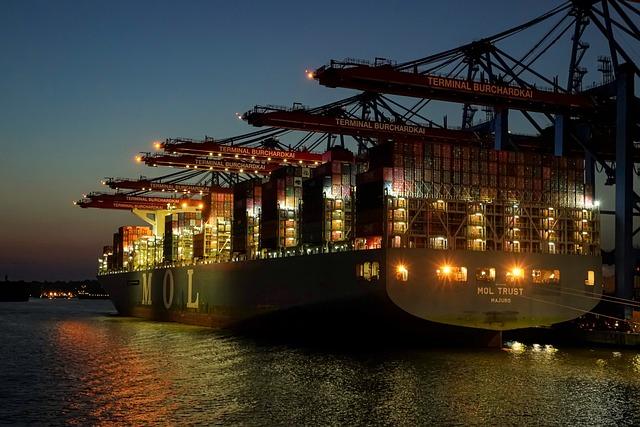In recent years, the sun has not only powered our homes but also fueled a transformative shift within the solar industry itself. As we stand on the brink of a new era in renewable energy, vertical integration emerges as a beacon of innovation and efficiency. This seamless consolidation of supply chains promises to reshape how solar power is harnessed, manufactured, and delivered. From silicon mines to sunlit rooftops, companies are reimagining their roles, weaving together the intricate tapestry of production and distribution under a single umbrella. Join us as we explore the rise of vertical integration in the solar industry, a trend that is setting the stage for a more streamlined, resilient, and sustainable energy future.
Harnessing Synergy: How Vertical Integration Transforms Solar Energy Production
In the ever-evolving landscape of solar energy, vertical integration emerges as a transformative force, reshaping how companies approach production and distribution. By unifying the supply chain, solar companies can achieve unprecedented levels of efficiency and innovation. Vertical integration allows for seamless coordination across various stages of production, from the creation of photovoltaic cells to the final installation of solar panels. This strategic alignment not only reduces costs but also fosters a culture of continuous improvement and rapid adaptation to technological advancements.
- Cost Efficiency: Streamlining operations reduces overhead and eliminates the need for middlemen, leading to lower prices for consumers.
- Quality Control: By overseeing every step, companies ensure higher standards and consistency in their products.
- Innovation: Close collaboration between different sectors promotes a fertile environment for research and development.
- Market Responsiveness: Integrated operations allow for quicker responses to market demands and shifts in consumer preferences.
As solar energy becomes increasingly pivotal in the global energy mix, vertical integration offers a compelling blueprint for companies aiming to enhance their competitive edge and contribute to a more sustainable future.

Illuminating Efficiency: The Economic Impact of Integrated Solar Supply Chains
In the solar industry, vertical integration has emerged as a catalyst for enhancing economic efficiency. By streamlining operations through integrated supply chains, companies can significantly reduce production costs and optimize resource allocation. This approach not only consolidates various stages of manufacturing—from silicon production to module assembly—but also fosters innovation and accelerates the time-to-market for new technologies. As a result, vertically integrated solar firms can better withstand market fluctuations and enhance their competitive edge.
- Cost Reduction: Integration minimizes overheads and transportation costs by centralizing production.
- Quality Control: Companies maintain higher standards by overseeing every step of the manufacturing process.
- Innovation: Direct feedback loops between stages encourage rapid technological advancements.
- Market Resilience: Integrated operations enable firms to quickly adapt to changes in supply and demand.

Navigating Challenges: Strategic Approaches to Vertical Integration in Solar
As solar companies strive for greater control over their supply chains, vertical integration emerges as a compelling strategy. However, this approach is not without its challenges. To successfully implement vertical integration, companies must adopt strategic measures that balance innovation with risk management. Key strategies include:
- Thorough Market Analysis: Understanding the current market dynamics and future trends is crucial. This involves evaluating competitors, identifying potential partners, and assessing technological advancements.
- Investment in Technology: Embracing cutting-edge technologies not only enhances production efficiency but also ensures product quality and competitiveness. Companies should focus on investing in research and development to stay ahead of industry innovations.
- Scalable Operations: Developing scalable business models allows companies to adapt to market fluctuations and demand changes without compromising operational efficiency.
- Risk Management: Establishing robust risk management frameworks helps mitigate potential disruptions in the supply chain, ensuring continuity and reliability.
By strategically addressing these areas, solar companies can effectively navigate the complexities of vertical integration, paving the way for sustainable growth and increased market presence.

Empowering the Future: Recommendations for Successful Integration in the Solar Sector
To truly harness the potential of vertical integration in the solar sector, it is essential to adopt strategic measures that ensure seamless integration and sustainable growth. Companies should focus on fostering innovation by investing in research and development, which can lead to groundbreaking technologies and processes. Additionally, cultivating a skilled workforce through continuous training and development programs can significantly enhance operational efficiency and adaptability.
- Streamline Supply Chains: By aligning procurement, manufacturing, and distribution processes, companies can reduce costs and improve product delivery times.
- Enhance Collaboration: Encourage partnerships with tech firms and research institutions to drive technological advancements and stay ahead of market trends.
- Focus on Sustainability: Implement eco-friendly practices and materials throughout the production cycle to meet increasing environmental standards and consumer expectations.
- Leverage Data Analytics: Utilize data-driven insights to optimize energy production, forecast demand, and enhance decision-making processes.
By implementing these recommendations, solar companies can position themselves as leaders in the industry, effectively contributing to a sustainable and energy-efficient future.
The Conclusion
As the sun sets on our exploration of the rise of vertical integration in the solar industry, it becomes clear that this strategic shift is more than just a passing trend. It’s a reflection of a sector that is constantly evolving, driven by the pursuit of efficiency, sustainability, and innovation. By harnessing the power of vertical integration, solar companies are not only illuminating the path to a more resilient energy future but are also reshaping the landscape of global energy dynamics. As we continue to navigate the complexities of this bright new era, one thing remains certain: the solar industry’s ascent is poised to shine even more brilliantly in the years to come.

































